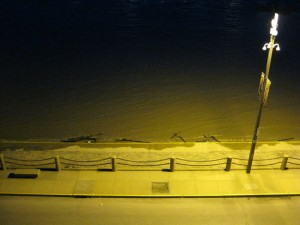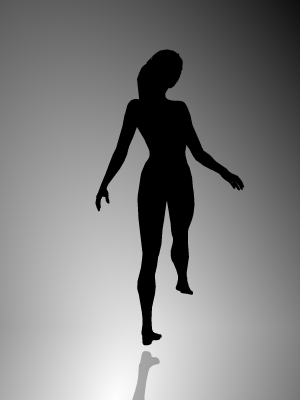Why You Can’t Fail a Bible Quiz
Here is a humorous/snarky look at some of the continuity problems inherent in an absolutely infallable text: It even gives the chapter and verse so we can confirm the true and inerrant details of this quiz
Here is a humorous/snarky look at some of the continuity problems inherent in an absolutely infallable text: It even gives the chapter and verse so we can confirm the true and inerrant details of this quiz
Cagle has 21 sharp-edged Goldman Sachs cartoons right here.
I love photographing the most famous monument in St. Louis, Missouri, the Gateway Arch. I've spent time at the riverfront downtown St. Louis for the past two nights. Last night, it was for a business meeting, where I shot this panorama (click the photos for a expanded views):
 Tonight, my wife and daughters returned to watch the sun set--the river water was high, making the river look much larger than usual. I focused on the sky, though, including this vertical panorama:
Tonight, my wife and daughters returned to watch the sun set--the river water was high, making the river look much larger than usual. I focused on the sky, though, including this vertical panorama:
 It was taken by standing directly under the arch and shooting up. For a thicker version of the arch, move up to within 30 feet of one of the legs and you'll end up with this:
It was taken by standing directly under the arch and shooting up. For a thicker version of the arch, move up to within 30 feet of one of the legs and you'll end up with this:
 As the sun went down, I shot this silhouette of the south leg and some of the visitors.
As the sun went down, I shot this silhouette of the south leg and some of the visitors.
 Shortly thereafter, while walking back to our car, my 11-year old daughter JuJu was struck by the color of the river bank lit by the streetlight. That image is the somewhat eerie ending to this little gallery:
Shortly thereafter, while walking back to our car, my 11-year old daughter JuJu was struck by the color of the river bank lit by the streetlight. That image is the somewhat eerie ending to this little gallery:
 None of this is difficult to do; it's all there for the taking. BTW, I used a consumer grade camera (the Canon Powershot SD1100IS).
For those interested in the geometry of the arch, Wikipedia offers this:
None of this is difficult to do; it's all there for the taking. BTW, I used a consumer grade camera (the Canon Powershot SD1100IS).
For those interested in the geometry of the arch, Wikipedia offers this:
This hyperbolic cosine function describes the shape of a catenary. A chain that supports only its own weight forms a catenary; in this configuration, the chain is strictly in tension. An inverted catenary arch that supports only its own weight is strictly in compression, with no shear. The gateway arch itself is not a catenary, but a more general curve called a flattened catenary of the form y=Acosh(Bx); a catenary is the special case when AB=1. While a catenary is the ideal shape for an arch of constant thickness, the gateway arch does not have constant thickness as it is narrower near the top.
A few years ago, I could make her spin either way. I'm having trouble with her tonight. She strongly wants to spin clockwise (relative to the floor). To make her spin counterclockwise, I need to cover her top half, then focus carefully lest she slips into the clockwise spin again.
 What an incredibly elegant illusion! In fact, she is one of Wikimedia Commons' "Featured Pictures," "which means that members of the community have identified it as one of the finest images on the English Wikipedia . . . "
This NYT blog entry identifies the creator of this image: Nobuyuki Kayahara.
Here is further explanation:
What an incredibly elegant illusion! In fact, she is one of Wikimedia Commons' "Featured Pictures," "which means that members of the community have identified it as one of the finest images on the English Wikipedia . . . "
This NYT blog entry identifies the creator of this image: Nobuyuki Kayahara.
Here is further explanation:
The silhouette image of the spinning dancer doesn’t have any depth cues. As a result, your eyes will sometimes see the dancer standing on her left leg and spinning to the right. And sometimes they will perceive her as standing on her right leg and spinning to the left. Most people, if they stare at the image long enough, will eventually see her turn both ways.
Campaign for a Commercial-Free Childhood (CCFC) is offering its five finalists for worst toy of the year for those who would like to cast their ballot:
CCFC will present its TOADY (Toys Oppressive And Destructive to Young Children) Award for the worst toy of the year. From thousands of toys that promote violence and/or precocious sexuality to children and push branded entertainment at the expense of children’s play, CCFC has selected five exceptional finalists.